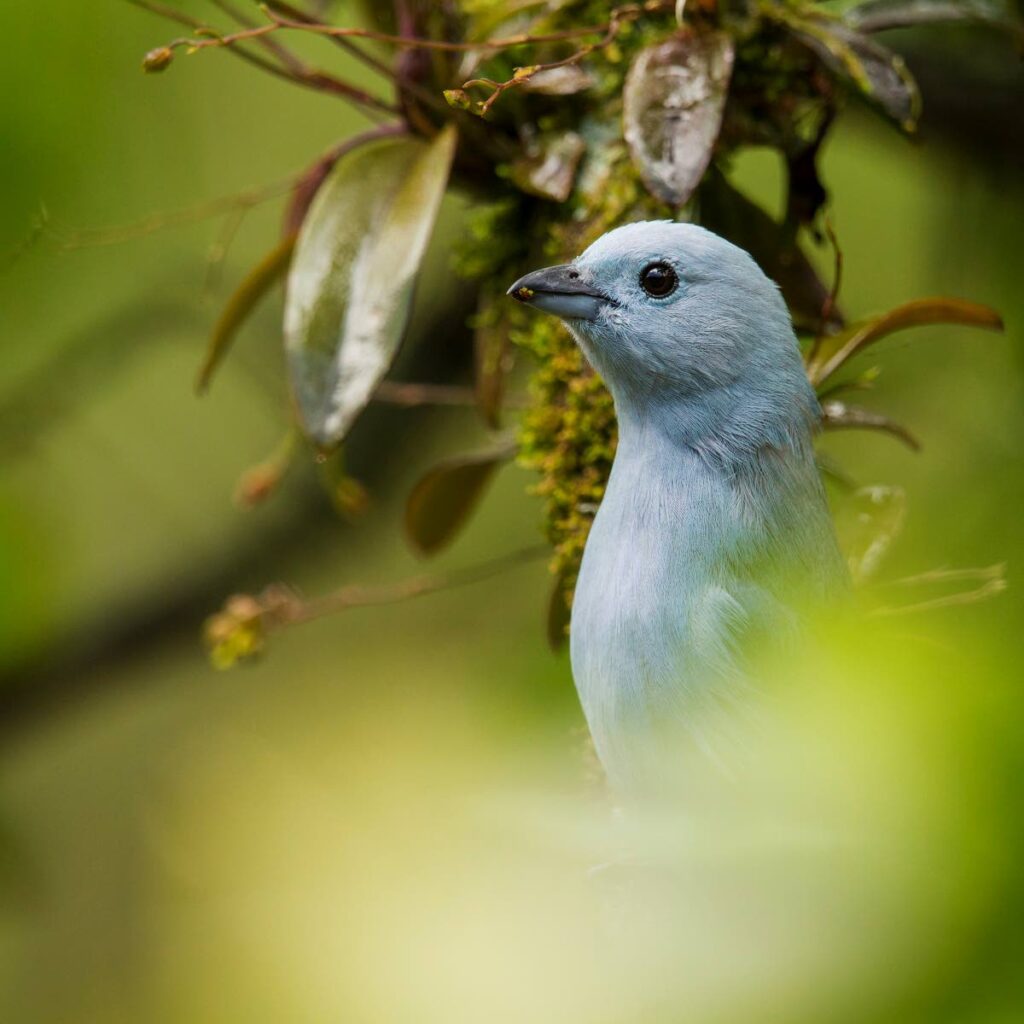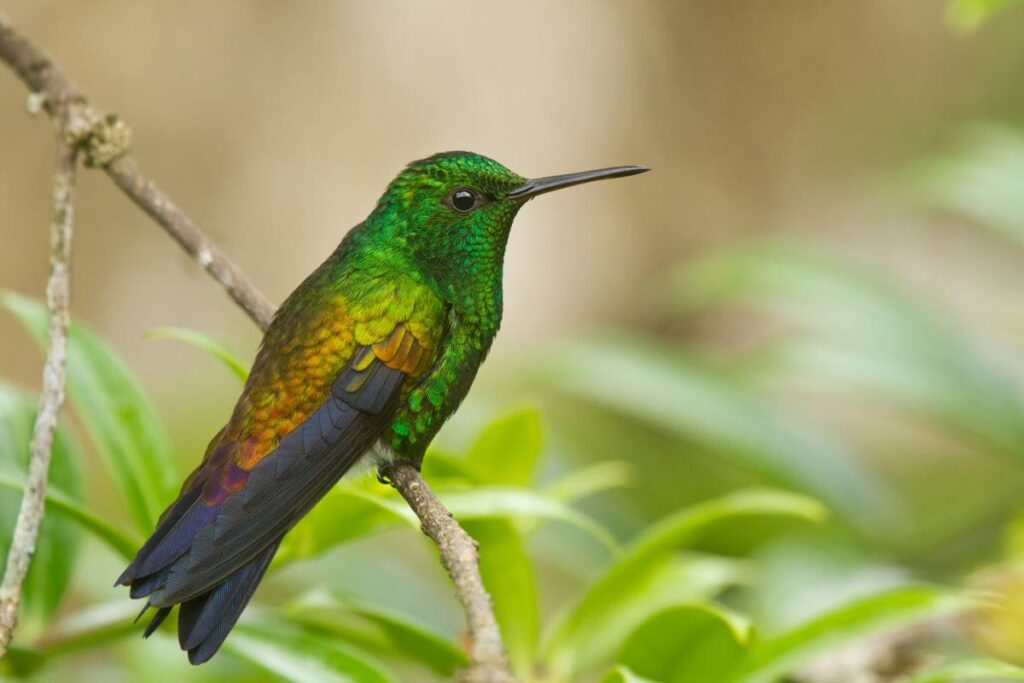Are 'blue Jeans' bluer in Tobago?

Faraaz Abdool discusses specific birds that live in Tobago and Trinidad, and comments on the amazing diversity that distinguishes the Tobagonian ones from the Trinidadians.
Our two islands, TT, boast an astonishing tally of bird species recorded over the course of recent ornithological history. For such small land area, TT’s species count of 492 catapults our tiny nation to the second highest global ranking in terms of species density. The expansion of scientific knowledge and understanding has direct repercussions on this total; more information on bird genetics leads to some species being split and others being lumped together. More often than not, it is the former that plays out as we learn more about the lives of our feathered friends.
The stellar example is the bird that adorns the $5 note – formerly known as the blue-crowned motmot, it was a bird found on both islands as well as across southern Central and northern South America. Studies revealed that the magnitude of variation among its subspecies necessitated a closer look which resulted in the species being split into five distinct species. Ours, found nowhere else on earth, is the Trinidad motmot. It is for this reason we should endeavour to examine species we currently view as the same, as any observation at any point by anyone can serve as the catalyst for further investigation.

Island ecosystems are the playground for endemism as evolution pushes adaptations in any environment without external influences. Both Trinidad and Tobago share numerous bird species, but a closer look reveals subtle differences between the birds that occur on one island or the other. Take the endearing blue-grey tanager for example. Locally known as “blue Jean,” this relatively common resident of backyards and gardens is a well-appreciated flash of powder blue against a backdrop of brown, black, and yellow birds. Our familiarity with this bird can help enable a significant observation. Trinidadian visitors to Tobago may have noted that the blue-grey tanagers on Tobago are bluer and more vivid than those on Trinidad. Naturally smitten by the undeniable beauty of the smaller island, this detail is often attributed to the general “good vibe” of Tobago. After all, the air is cleaner, the beach is always within arm’s reach, the people are friendly, so the birds are simply a reflection of the observer’s mood, right?
This is only partly true. While there is veracity in the ability of one’s disposition to influence what we perceive, blue-grey tanagers do differ from one island to the next. In fact, the subspecies of blue-grey tanager is not only legitimately bluer and more vivid than those found on Trinidad, but also endemic to Tobago. A similar phenomenon occurs with many other species that superficially occur on both islands.
Residents of montane rainforest on TT, the yellow-legged thrush does not share in the same level of adulation as the blue-grey tanager. It is not commonly observed in its habitat; on Trinidad a hike to some of the steeper hills and ridges is necessary to hear this bird. On Tobago it is moderately easier to spot. However, most people do not encounter this bird with any frequency. Fleeting glances rarely afford opportunities for deliberate and careful observation – therefore it may come as a surprise that like the blue-grey tanagers mentioned earlier, Yellow-legged thrushes on Trinidad also look different from those on Tobago. They are black and grey on Trinidad and all black on Tobago. Their yellow legs are the same on both islands.
Visual cues between subspecies can be more subtle, sometimes obscure and indiscernible. This becomes more difficult when one simply doesn’t get the chance to look at a bird properly.
Hummingbirds are notorious in this regard as they are always operating at full throttle. Even the ubiquitous copper-rumped hummingbird can prove a difficult subject to lock one’s eyes onto. But once the opportunity to observe arises, take a closer look. Copper-rumped hummingbirds on Tobago are not only more vivid than those on Trinidad; they are also slightly larger. There is a separation on the subspecies level between those found on each island, furthermore both subspecies are endemics. This common jewel was first scientifically described on Tobago – and bears the word tobaci in its Latin name.

Another relatively common hummingbird that is found on both islands is the white-necked Jacobin. This distinctive species has a wide range across the neotropics and is one of the more conspicuous characters at artificial hummingbird feeders throughout the region. Just as aggressive as the smaller copper-rumped hummingbirds, male white-necked Jacobins in particular have a fiery reputation. So much so that some females of the species have been observed donning male plumage in an effort to take advantage of this fact and avoid potential bullying. This remarkable hummingbird is currently split into two distinct subspecies, one that is found in specific habitats from Mexico through Brazil and Bolivia, including Trinidad; the other is found only on Tobago. Although there has been much debate surrounding the greater group, Tobagonian birds remain the only section of the wider white-necked Jacobin population that can be differentiated as they are larger than the others.
Nature is infinite in her ways, and birds provide a perfect means by which we can explore her diversity. Observation and familiarity facilitate better and more precise distinctions, but to achieve a greater level of awareness we must first spend more time observing the birds we share our space with. In time, we will detect differences in colouration, in voice and habits – we can collect this information consciously or leisurely. Perhaps in a few years we will bear witness to some of these birds following the divergence of the blue-crowned motmot, becoming separate species unique to Tobago, Trinidad, or both. Let us celebrate our local birds; and in so doing, appreciate our islands’ rich natural environment and the diversity it engenders.


Comments
"Are ‘blue Jeans’ bluer in Tobago?"